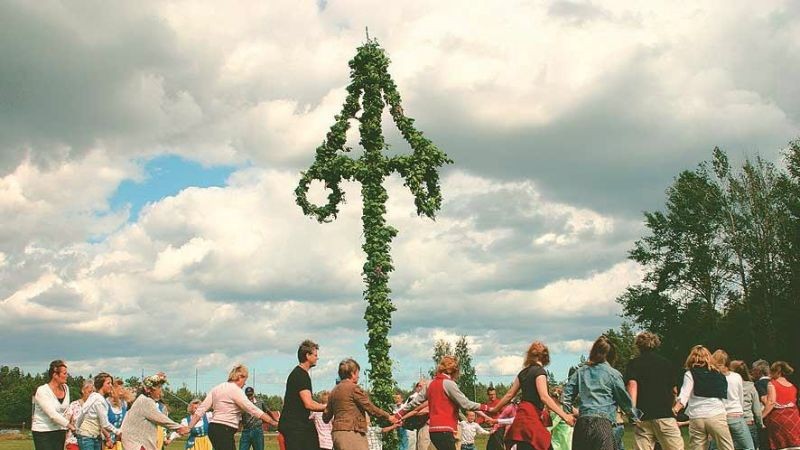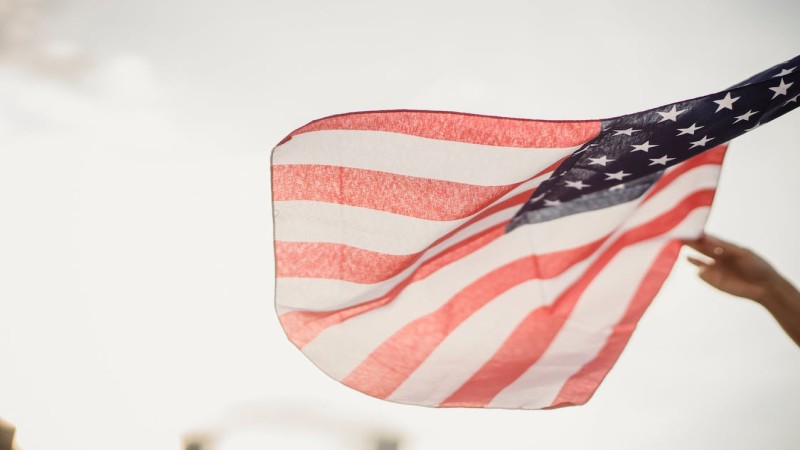
What is Midsummer's Day?
Midsummer's Day marks the longest day and the shortest night of the year. It is a celebration of the summer season around the time of the summer solstice. Its roots come from the Pagan pre-Christian tribe of Europe.
The Midsummer's Day festival is an important event in Sweden, and people made proposals to make midsummer eve a public holiday. Although the longest day falls on June 20, the old Julian calendar marked it on June 24, and the midsummer date stayed the same. The midsummer's day celebrations allow everyone to thank nature for its beautiful gifts.
Midsummer's Day - All Quick Overview
- Time / Date: June 24
- Category: Cultural
- Where It’s Marked: Globally
- Why It’s Marked: The day is marked to appreciate the different commodities and gifts nature provides us.
History Of Midsummer's Day
Midsummer's Day was originally the celebration of the Pagan tribe. They used to believe that plants had healing powers and needed to be honored to show appreciation for all the gifts. So they made a ritual of fertility and successful harvest known as midsummer to pay their respects.
During the festival, the people used to dance around maypoles, wear fashionable garments, and pick wildflowers and herbs on midsummer's day's eve. They thought picking wildflowers and herbs would bring good fortune.
Moreover, they also used to light a bonfire to keep evil spirits away. They believed that the evil spirits roamed free on the earth when the sun was turning towards the northern hemisphere.
According to the Gospel of Luke, in the 4th century AD, the feast of St. John’s Day was established due to the records stating his birthday was six months before the birth of Jesus Christ. So, eventually, the feast fell on June 24, which coincided with the midsummer's day celebrations.
Several churches started dedicating the day to St. John’s Day by the 6th century AD, reducing the midsummer celebrations more. However, people still celebrated some traditions of the midsummer on June 24.
By middle age, the midsummer festival had spread to many countries. Germany had its traditions, which got incorporated in Sweden and other countries. Their summer solstice festival was called "Litha." They introduced the ritual of dancing around the maypoles. They used green leaves to cover the maypoles and raised them on May 1. Thus, it received its name. But it was hard to find green leaves then, so the day shifted to midsummer.
Still, the day is widely celebrated in many countries, especially Sweden, Scandinavia, and the British Isles. To the Swedish people, the midsummer festival is second to Christmas.
Moreover, Swedish, Scandinavians, and the British Isles people also have the advantage of observing a full day of light, giving them the feeling of the ancient Pagan tribe.
How to Celebrate Midsummer's Day
The day marks the middle period of the growing and harvesting seasons. It is a magical time for the people and a new beginning of bonfires, crops, and festivals. In some cultures, it is also known as one of four "Quarter Days."
The agricultural community believes the mid-point of summer is a fruitful period for all. Different countries and communities celebrate midsummer's day in various ways. We have briefly described five countries’ midsummer celebrations.
1. Latvia
People in Latvia spend the day in the countryside around a bonfire. They make bacon pie and brew their sweet beer for everyone to enjoy. Moreover, you will also find a special round-shaped cheese with caraway seeds. Late at night, couples search for fern blossoms because they believe it brings good luck to lovers.
2. Sweden
Midsummer is known as Midsommar in Sweden. It is a national holiday and is largely celebrated. Like Latvians, Swedish people travel to the countryside, light a bonfire, and weave wood or flower garlands. They prepare many dishes for lunch, such as dill and chives, pickled herring with chat potatoes, cheeseboard, and of course, for the drink, they prefer nubbe (vodka schnapps). Aside from food and drinks, they enjoy dancing around a maypole decorated with vibrant, freshly-picked flowers.
3. Greece
Greece has a 2,500-year-old summer solstice tradition—hiking to the peak of Mt. Olympus. The mountain is not easy to climb as it has an elevation of 9,573 feet, but still, people love to perform this tradition. It brings them closer to nature.
4. Italy
The midsummer traditions vary regionally in Italy. People eat snails in Rome because they believe it will protect them from evil spirits or devilry. Then, in northern Italy, restaurants add aged balsamic vinegar to their dishes. Not only does it make them more tasteful, but it also symbolizes the year’s grape harvest, which is entering a critical development stage.
5. Estonia
In Estonia, people celebrate midsummer on the night before June 24, and it is known as Jaanipäev (Jaan's Day). They stay awake the night, singing, dancing, eating, and drinking. The main event of their tradition is jumping over the bonfire to remove any bad luck.
Countries that Observe Midsummer's Day
Midsummer's Day is observed globally by many countries.
Interesting Facts about Midsummer's Day
Midsummer's Day celebrations have tons of interesting facts as different countries have different traditions. Enjoy some interesting facts here.
- Astronomically, the midsummer should be on June 20 or June 21.
- William Shakespeare wrote a play on midsummer called “Midsummer Night’s Dream.”
- In 14th century England, midsummer was celebrated on June 23 instead of June 24.
- People of Kuldiga, Latvia, run naked around the town at 3 am to commemorate the day.
- The midsummer moon is called the "Honey Moon," with literal honey rituals.
Midsummer's Day Quotes
We wish your family and friends a great new beginning using some simple quotes and wishes. Here are three midsummer quotes to help you out.
“Let every dawn be to you as the beginning of life, and every setting sun be to you as its close.”
“And so with the sunshine and the great bursts of leaves growing on the trees, just as things grow in fast movies, I had that familiar conviction that life was beginning over again with the summer.”
“Each solstice is a domain of experience unto itself. At the summer solstice, all is green and growing, potential coming into being, the miracle of manifestation painted large on the canvas of awareness.”
FAQ
1. Why do women keep wildflowers under their pillows when they sleep midsummer?
It is believed that women will be able to see their future husbands if they do so.
2. Why is June 24 called midsummer?
June 24 is called midsummer because it is the year's longest day.
3. What are some common traditions of midsummer?
Burning incense, lighting a bonfire, dancing, singing, eating, and drinking are some of the common midsummer traditions in all countries.
Midsummer's Day Observances
| Year | Weekday | Date | Name | Holiday Type |
|---|---|---|---|---|
| 2023 | Sat | 24 Jun | Midsummer's Day | Public |
| 2024 | Mon | 24 Jun | Midsummer's Day | Public |
| 2025 | Tue | 24 Jun | Midsummer's Day | Public |
| 2026 | Wed | 24 Jun | Midsummer's Day | Public |
| 2027 | Thu | 24 Jun | Midsummer's Day | Public |
We constantly update the dates of holidays that keep changing every year. However, while we revise and change some dates to be accurate, if you find any errors, kindly inform us . That will mean a lot to us.



